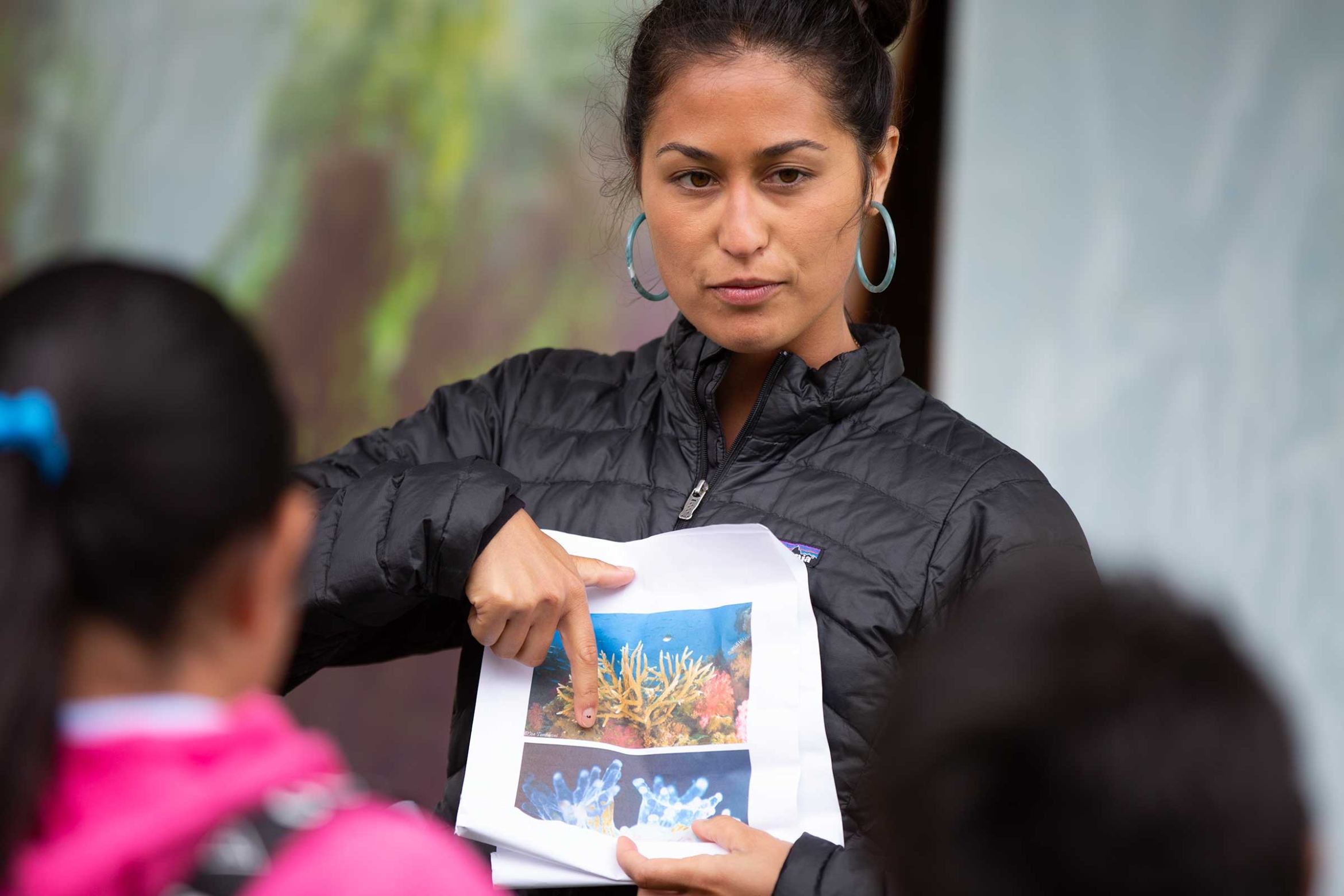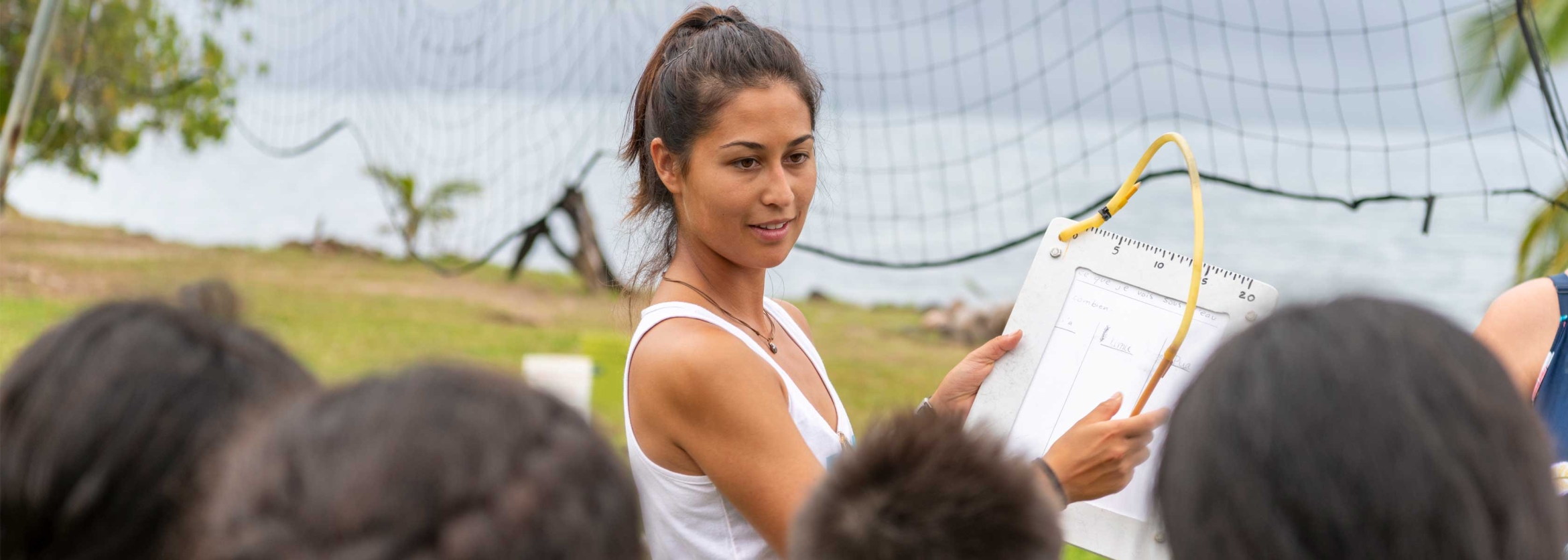The children’s faces are alight with excitement and curiosity. Spurred on by graduate students, one reaches out tentatively to touch a small piece of coral. Another peers through a magnifying glass, studying the intricacies of a tiny crab shell. A few feet away, a classmate holds a pencil and paper underwater and — in utter astonishment — jots down letters.
Relating environmental research that expands our understanding of the coral reef ecosystems around Mo’orea to the general public living in French Polynesia is one of the primary function of the University of California Gump Research Station’s Atitia Center, but the U.S. scientists who work at the research station also are keen to share their knowledge with schoolchildren — both in Mo’orea and in California — to nurture their budding scientific curiosity.
In Mo’orea children from the local community visit Gump Research Station for a day of marine science. In California, students from Washington Elementary STEM Magnet School in Pasadena visit UC Santa Barbara, where they learn about corals and kelp and other sea life. At both locations they get a firsthand look at how science works and where it leads.
“In terms of education, we’re always looking for new ways to enable teachers to incorporate the research data we’re collecting now into their lesson plans, so the science that’s currently being taught in K-12 classrooms is based on the latest information we have available, not on information that may be 30 to 50 years old,” explained senior project scientist Andrew Brooks.
To that end, the Mo’orea Coral Reef Long Term Ecological Research (MCR LTER) team creates pre-packaged lesson plans that include everything from PowerPoint slides to sample data and lists of necessary materials. “We know teachers, particularly in elementary grades three through six have a huge need for this,” continued Brooks, who is also MCR LTER’s deputy program director and its education outreach coordinator.

MCR LTER Outreach initiatives are designed to make research conducted at Gump Research Station more accessible to the general public. The MCR LTER participates in global events such as Earth Day and World Ocean Day with the goal of increasing science literacy and awareness of environmental conditions. “People can choose to agree or disagree with our scientific interpretations of the data we have collected, but this is our opportunity as scientists to say, ‘This is how we view the world and this is how we go about forming scientific opinions based on the data we have collected,’” Brooks said.
In Mo’orea, researchers participate in Gump Research Station outreach efforts to share their findings with the local communities. “We’re incorporating some of the locals’ traditional knowledge into our research questions and the way we collect and analyze data,” he continued. “And we’re starting to form productive partnerships with some of the local fishermen on the island. Those fishermen have spent their entire lives in and on the water, looking at the reefs and the organisms that live there. The intergenerational knowledge transfer that’s gone on is tremendous, and we want to take advantage of that highly specialized knowledge in our studies as much as we can.”

